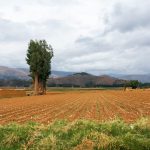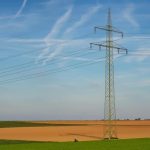Looking for eco-friendly alternatives to silk fabric? You’re in luck! In this article, we’ll explore 14 sustainable options that are kinder to the environment.
From organic cotton to eucalyptus fabric, these alternatives offer the same luxurious feel without the environmental impact.
So, if you’re ready to make a more sustainable choice for your wardrobe, keep reading to discover these fantastic silk fabric alternatives.
Table of Contents
Organic Cotton
Are you wondering how organic cotton can be an eco-friendly alternative to silk fabric? Well, let’s explore the first subtopic of sustainable farming and its environmental impact.
Organic cotton is grown using sustainable farming practices that prioritize soil health, water conservation, and biodiversity.
Unlike conventional cotton farming, which heavily relies on chemical fertilizers and pesticides, organic cotton farming uses natural and organic methods to control pests and enrich the soil. This reduces the environmental impact by preventing the contamination of soil, water, and air with harmful chemicals.
Furthermore, organic cotton farming promotes biodiversity by avoiding genetically modified seeds and encouraging the growth of native plants. This creates a more balanced ecosystem, supporting beneficial insects and birds that naturally control pests. It also reduces the need for synthetic inputs, which further decreases the environmental footprint of cotton production.
In addition to sustainable farming practices, organic cotton production also focuses on water conservation. Farmers use techniques such as drip irrigation and rainwater harvesting to minimize water usage, thus reducing the strain on water resources.
Hemp Fabric
One eco-friendly silk fabric alternative to consider is hemp fabric. Hemp fabric is known for its sustainability and versatility, making it an excellent choice for those looking for eco-friendly clothing options.
The sustainability of hemp fabric is impressive. Hemp crops require significantly less water compared to other crops, such as cotton. Additionally, hemp is a fast-growing plant that doesn’t require the use of pesticides or herbicides. This makes it an environmentally friendly choice that helps reduce water consumption and chemical pollution.
Hemp fabric is also highly versatile. It can be used to create a wide range of clothing items, including shirts, pants, dresses, and even accessories like bags and hats. The fabric is durable and breathable, making it suitable for both warm and cold weather. It also has natural antibacterial properties, which helps reduce odor and keep the fabric fresh for longer periods.
Furthermore, hemp fabric is hypoallergenic, making it a great option for individuals with sensitive skin or allergies. It’s also resistant to mold and mildew, ensuring that the fabric stays in good condition for a longer time.
Bamboo Fabric
If you’re looking for another eco-friendly silk fabric alternative, bamboo fabric is a fantastic choice. Not only is it sustainable and renewable, but it also offers a range of benefits that make it an excellent option for those seeking environmentally friendly clothing options.
Here are three reasons why bamboo fabric is a great choice:
-
Bamboo fabric is incredibly soft and smooth, providing a luxurious feel against your skin. It’s perfect for those who value comfort and want to indulge in the gentle touch of fabric.
-
Bamboo fabric is highly breathable, allowing air to circulate and keeping you cool and dry all day. This makes it an ideal choice for hot weather or for individuals who tend to sweat a lot.
-
Bamboo fabric is naturally hypoallergenic and antibacterial, making it suitable for those with sensitive skin or allergies. It can help prevent irritation and keep your skin healthy and happy.
When compared to other sustainable linen fabrics, bamboo fabric stands out for its versatility and superior eco-friendly properties. It requires less water and pesticides to grow, making it a more sustainable choice.
Tencel Fabric
Now let’s delve into the benefits of Tencel fabric, which offers a sustainable and eco-friendly alternative to silk, building on the advantages of bamboo fabric.
Tencel fabric is made from cellulose fibers derived from wood pulp, making it a renewable and biodegradable material. One of the key benefits of Tencel fabric is its exceptional softness and smooth texture, which rivals that of silk. This makes it a luxurious choice for clothing and bedding.
In addition to its luxurious feel, Tencel fabric also boasts excellent moisture-wicking properties, making it perfect for active wear. It has the ability to absorb moisture efficiently, keeping you dry and comfortable throughout your activities. Furthermore, Tencel fabric is breathable, allowing for better airflow and reducing the likelihood of overheating.
When compared to other sustainable fabrics, Tencel fabric stands out for its low environmental impact. It requires less water and energy to produce compared to conventional cotton, and its production process involves the use of non-toxic solvents. Tencel fabric is also known for its durability, ensuring that your garments and home textiles will last longer.
Soy Silk
Looking for an eco-friendly and sustainable alternative to silk? Have you considered soy silk? This innovative fabric is made from leftover soybean fibers and provides numerous benefits for both you and the environment.
Here are three reasons why you should consider soy silk:
-
Sustainable: Soy silk is made from the byproducts of soybean production, reducing waste and utilizing a renewable resource. By choosing soy silk, you’re supporting a more sustainable fashion industry.
-
Soft and Luxurious: Despite being derived from plant fibers, soy silk has a smooth and silky texture that rivals traditional silk. It’s lightweight, breathable, and feels gentle against your skin, making it perfect for comfortable and stylish clothing.
-
Hypoallergenic: Soy silk is naturally hypoallergenic, making it an excellent choice for those with sensitive skin or allergies. It’s free from harsh chemicals and pesticides, ensuring that your clothing is gentle on your skin and the environment.
The manufacturing process of soy silk involves extracting the fibers from soybean waste, which are then spun into yarn and woven into fabric. This process requires less water and energy compared to traditional silk production, making it a more sustainable option.
Linen Fabric
Let’s talk about linen fabric, a sustainable alternative to silk.
Linen is made from the fibers of the flax plant, which is known for its durability and breathability.
Not only is linen biodegradable and renewable, but it also requires less water and energy to produce compared to silk, making it a great eco-friendly choice.
Sustainable Linen Fabric
Choosing sustainable linen fabric is a great option for reducing environmental impact while enjoying a comfortable and eco-friendly alternative to silk. Linen is made from the fibers of the flax plant, which is known for its durability and breathability. By opting for sustainable linen clothing, you’re supporting ethical and responsible fashion practices.
Here are a few reasons why sustainable linen fabric is a smart choice:
- It requires less water and pesticides compared to other fabrics, making it a more environmentally friendly option.
- Linen production methods are generally more sustainable as the flax plant can be grown in a variety of climates without the need for synthetic fertilizers.
- Linen fabric is biodegradable, meaning it won’t contribute to the accumulation of textile waste in landfills.
Benefits of Linen?
One benefit of linen fabric is that it offers a natural and breathable option for those seeking an eco-friendly alternative to silk. Linen is made from the flax plant, which requires less water and pesticides compared to other crops used for fabric production. This makes it a sustainable choice for fashion. Linen also has excellent moisture-wicking properties, making it ideal for warm weather. Its natural fibers allow for better airflow, keeping you cool and comfortable. Additionally, linen is a durable fabric that can withstand frequent washing and wear, making it a long-lasting investment for your wardrobe. When compared to other sustainable fabrics like cotton and hemp, linen stands out for its lightweight and luxurious feel.
| Benefits of Linen in Fashion | Linen vs. Other Sustainable Fabrics |
|---|---|
| Natural and breathable | Requires less water and pesticides |
| Moisture-wicking | Durable and long-lasting |
| Lightweight and luxurious |
Piñatex (Pineapple Fiber)
Piñatex is a sustainable fabric made from pineapple fibers. The benefits of using Piñatex are numerous. Not only is it a cruelty-free alternative to leather, but it also helps reduce waste in the pineapple industry. By utilizing the fibers that are typically discarded, Piñatex helps to create a more sustainable supply chain.
In terms of eco-friendly fashion and sustainability, Piñatex plays a significant role. It reduces the need for traditional leather production, which has a large environmental impact due to the use of toxic chemicals and intensive farming practices. Piñatex, on the other hand, is produced using a low-energy process and does not require additional land, water, or pesticides.
Furthermore, Piñatex supports local farming communities as it is primarily sourced from pineapple plantations in the Philippines, providing additional income for farmers. This not only helps to strengthen local economies but also promotes sustainable agricultural practices.
Sustainable Pineapple Fabric
To create a sustainable alternative to silk fabric, consider using Piñatex, a pineapple fiber fabric made from the leaves of pineapple plants. This innovative material offers a range of benefits for both the environment and fashion industry.
Here are three reasons why you should consider Piñatex:
-
Piñatex applications are versatile: This fabric can be used to create a wide range of products, including shoes, bags, and even furniture. Its unique texture and appearance add a touch of natural elegance to any design.
-
The pineapple fabric production process is eco-friendly: The production of Piñatex involves extracting fibers from pineapple leaves, a byproduct of the agriculture industry. This process reduces waste and promotes sustainable use of resources.
-
Piñatex promotes ethical fashion: By choosing Piñatex, you support the development of a sustainable and cruelty-free alternative to traditional silk. This fabric is vegan-friendly and doesn’t involve the use of animals.
Incorporating Piñatex into your wardrobe or designs not only helps the planet but also showcases your commitment to sustainable and ethical fashion. So why not give this pineapple fabric a try?
Benefits of Piñatex?
When considering the benefits of Piñatex (Pineapple Fiber), you’ll discover a sustainable fabric that offers numerous advantages for both the environment and the fashion industry.
One of the key advantages of using Piñatex is its positive environmental impact. Piñatex production utilizes pineapple leaves, a byproduct of the fruit industry that would otherwise go to waste. This reduces the need for additional land, water, and pesticides that would be required for other fabric production methods.
Furthermore, the production process of Piñatex has a lower carbon footprint compared to traditional leather or synthetic fabrics. This makes Piñatex a more sustainable choice for environmentally conscious individuals and brands.
Modal Fabric
One popular eco-friendly silk fabric alternative is modal fabric, a sustainable option for those seeking a comfortable and sustainable clothing choice. Modal fabric is made from beech tree pulp, which is a renewable resource. The production of modal fabric involves sustainable production methods, such as using non-toxic chemicals and recycling water.
Modal fabric offers several benefits that can evoke an emotional response in the audience:
-
Softness: Modal fabric is known for its luxurious softness, making it a delight to wear against the skin. It feels silky smooth and gentle, providing a comfortable and cozy experience.
-
Breathability: Modal fabric is highly breathable, allowing air to flow freely and keeping you cool and dry even in hot and humid climates. This feature can evoke a sense of relief and comfort, especially during the summer months.
-
Durability: Modal fabric is known for its strength and durability, making it a long-lasting choice for clothing. It can withstand frequent washing and wear, reducing the need for replacements and contributing to a more sustainable wardrobe.
Lyocell Fabric
Are you looking for a sustainable alternative to silk fabric? Look no further than Lyocell fabric.
This eco-friendly material offers numerous benefits, making it an excellent choice for conscious consumers.
From its softness and breathability to its biodegradability and low environmental impact, Lyocell fabric checks all the boxes for a sustainable and stylish option.
Sustainable Silk Alternative
To achieve sustainability in your fashion choices, consider using lyocell fabric as a sustainable alternative to silk. Unlike traditional silk production techniques that involve the killing of silk worms, lyocell fabric is made from wood pulp using a closed-loop process that minimizes waste and chemical use. This eco-friendly fabric offers numerous benefits, including:
-
Reduced environmental impact: Silk farming requires vast amounts of resources, including water, energy, and land. By choosing lyocell fabric, you can help mitigate the negative impact of silk production on the environment.
-
Animal-friendly: Unlike silk, which involves the harm and killing of silk worms, lyocell fabric is cruelty-free and doesn’t harm any living creatures.
-
Versatility: Lyocell fabric is known for its softness, breathability, and versatility, making it suitable for a wide range of clothing items, including dresses, shirts, and even activewear.
Benefits of Lyocell
Enjoy the benefits of lyocell fabric, including its softness, breathability, and versatility for all your sustainable fashion choices.
Lyocell, a type of fabric made from wood pulp, offers numerous advantages that make it an excellent eco-friendly alternative to silk. One of the key benefits of lyocell is its exceptional softness, which rivals that of silk itself. It feels gentle and luxurious against your skin, providing utmost comfort throughout the day.
Additionally, lyocell fabric is highly breathable, allowing air to circulate and preventing excessive sweating. This makes it an ideal choice for warm weather or intense physical activities.
Moreover, lyocell is a highly versatile fabric, suitable for a wide range of clothing items, from dresses and blouses to activewear and loungewear.
Not only does lyocell offer superior comfort and versatility, but it also has a minimal environmental impact. The production process of lyocell involves using non-toxic chemicals and a closed-loop system that recycles solvents, resulting in significantly reduced waste and water usage.
Eco-Friendly Fabric Choice
When considering an eco-friendly fabric choice, look no further than lyocell fabric for its sustainable qualities and versatility.
Lyocell, also known as Tencel, is made from the cellulose fibers of sustainably sourced trees, such as eucalyptus or bamboo.
This fabric offers a range of benefits that make it a top choice for environmentally conscious consumers:
- Soft and smooth: Lyocell fabric feels gentle against your skin, providing comfort and breathability.
- Moisture-wicking: This fabric has excellent moisture absorption properties, keeping you dry and cool throughout the day.
- Biodegradable: Unlike synthetic fabrics, lyocell is biodegradable, reducing environmental impact and waste.
When compared to other eco-friendly fabric choices, such as organic cotton or hemp, lyocell stands out for its superior softness and moisture-wicking abilities.
It’s a sustainable option that combines style, comfort, and environmental responsibility.
Seacell Fabric
Seacell fabric is a sustainable alternative to silk that offers a combination of comfort and eco-friendliness. Made from sustainably harvested seaweed and wood pulp, Seacell fabric isn’t only soft and breathable but also biodegradable. It’s produced using a closed-loop process, which means that the chemicals used in its production are recycled and reused, minimizing waste and pollution.
Compared to silk, Seacell fabric has a lower environmental impact. Silk production requires the cultivation of silkworms and the harvesting of their cocoons, which can harm the worms and contribute to deforestation. In contrast, Seacell fabric is made from renewable resources and doesn’t involve the exploitation of animals.
Seacell fabric also has similar properties to silk, making it a viable alternative. It has a luxurious feel and drapes beautifully, making it suitable for clothing and home textiles. Additionally, Seacell fabric is hypoallergenic and has natural antimicrobial properties, making it ideal for those with sensitive skin.
Another sustainable fabric alternative worth considering is pineapple fabric. Made from pineapple leaf fibers, this fabric is both biodegradable and cruelty-free. It offers a similar texture and appearance to silk and can be used in a variety of applications, from clothing to accessories.
Ahimsa Silk
To continue the discussion on eco-friendly silk fabric alternatives, let’s explore the concept of Ahimsa Silk, a compassionate and sustainable option for conscious consumers.
Ahimsa Silk, also known as peace silk, is a fabric that’s produced without causing harm to silkworms. Unlike traditional silk production, where silkworms are boiled alive to harvest their silk, Ahimsa Silk allows the silkworms to complete their life cycle and emerge from their cocoons before the silk is extracted.
Here are three reasons why Ahimsa Silk is a compelling choice for those seeking ethical and sustainable fabrics:
-
Animal welfare: Ahimsa Silk upholds the principle of non-violence and respects the lives of silkworms. By allowing them to live and complete their natural lifecycle, Ahimsa Silk promotes compassion towards these creatures.
-
Environmental sustainability: Ahimsa Silk is produced using eco-friendly and biodegradable methods. The use of natural dyes and non-toxic chemicals further reduces the fabric’s impact on the environment.
-
Social responsibility: Ahimsa Silk supports fair trade practices and provides sustainable livelihoods for farmers and artisans involved in its production. By choosing Ahimsa Silk, you contribute to the well-being of these communities.
Incorporating Ahimsa Silk into your wardrobe allows you to make a conscious choice that aligns with your values of compassion, sustainability, and social responsibility. By opting for Ahimsa Silk, you can enjoy the luxurious feel of silk while knowing that it was produced in a way that promotes peace and harmony with nature.
Peace Silk
If you’re looking for an ethical and sustainable alternative to traditional silk, consider peace silk. Also known as ahimsa silk, peace silk is produced in a way that prioritizes the welfare of the silkworms and promotes non-violence.
Unlike conventional silk production, where the silkworm cocoons are boiled alive to obtain the silk fibers, peace silk allows the silkworms to complete their natural life cycle. The process of peace silk involves waiting for the silkworms to emerge from their cocoons as moths. Once the moths have left, the cocoons are carefully unraveled to extract the silk fibers. This allows the silkworms to live a full life, in line with the principles of ahimsa, which means non-violence or respect for all living beings.
By choosing peace silk, you’re supporting a more humane and sustainable silk industry. This alternative helps to reduce harm to the silkworms while still providing a beautiful and luxurious fabric. Peace silk is often handwoven, resulting in unique and high-quality textiles.
As the demand for sustainable and cruelty-free products continues to grow, peace silk offers a viable option for those seeking a more compassionate and eco-friendly choice. By supporting peace silk, you’re contributing to a more ethical and sustainable fashion industry.
Eucalyptus Fabric
Eucalyptus fabric offers numerous benefits that make it an excellent alternative to silk.
Not only is it incredibly soft and breathable, but it also has natural temperature-regulating properties, keeping you cool in the summer and warm in the winter.
Additionally, eucalyptus fabric is highly sustainable, as it requires significantly less water and land to produce compared to traditional silk fabric.
Benefits of Eucalyptus Fabric
You can experience the benefits of eucalyptus fabric for a sustainable alternative to silk. Eucalyptus fabric isn’t only eco-friendly but also offers several advantages in the fashion industry. Here are some reasons why eucalyptus fabric is a great choice:
-
Sustainability: Eucalyptus fabric is made from sustainably sourced eucalyptus trees, which require less water and pesticides compared to other fabrics. It’s also biodegradable, reducing its impact on the environment.
-
Softness and Comfort: Eucalyptus fabric has a luxurious feel and is incredibly soft against the skin. It provides excellent breathability, wicking away moisture and keeping you cool and comfortable.
-
Hypoallergenic: Eucalyptus fabric is naturally hypoallergenic, making it ideal for those with sensitive skin or allergies. It’s gentle and non-irritating, ensuring a comfortable wearing experience.
Sustainability of Eucalyptus Fabric
When considering the sustainability of eucalyptus fabric, it’s important to note its positive environmental impact.
Eucalyptus fabric is made from the pulp of eucalyptus trees, which are fast-growing and require minimal water and pesticides to thrive. This makes eucalyptus fabric a more sustainable alternative to traditional fabrics like cotton or silk.
Additionally, the production process of eucalyptus fabric is also eco-friendly. It involves using a closed-loop system, where the chemicals used to break down the eucalyptus pulp are continuously recycled, reducing waste and minimizing environmental pollution.
Furthermore, eucalyptus fabric is biodegradable, meaning it can naturally decompose over time without releasing harmful substances into the environment.
Recycled Polyester Fabric
To contribute to a more sustainable fashion industry, consider incorporating recycled polyester fabric into your wardrobe. Recycled polyester offers several advantages that make it an eco-friendly choice for clothing.
Here are some reasons why you should consider using recycled polyester fabric:
-
Reduced environmental impact: By using recycled polyester, you’re helping to reduce the demand for virgin polyester, which is made from non-renewable resources like crude oil. This reduces the extraction of fossil fuels and decreases greenhouse gas emissions.
-
Waste reduction: Recycled polyester is made from post-consumer plastic bottles and other polyester waste materials. By recycling these items, we can divert them from landfills and give them a new life as fabric.
-
Energy and water savings: The production of recycled polyester uses less energy and water compared to virgin polyester. This means that by choosing recycled polyester, you’re conserving valuable resources and reducing the strain on our planet.
By choosing recycled polyester fabric, you can make a positive impact on the environment while still enjoying stylish and functional clothing.
Frequently Asked Questions
How Is Organic Cotton Different From Regular Cotton in Terms of Sustainability?
Organic cotton is different from regular cotton in terms of sustainability because it is grown without synthetic pesticides or fertilizers. By choosing organic cotton, you are supporting a more environmentally friendly and sustainable option for fabric production.
What Are the Key Benefits of Using Hemp Fabric Instead of Conventional Fabrics?
Using hemp fabric instead of conventional ones has several benefits. It is more sustainable as it requires less water and pesticides to grow. Additionally, it has a lower environmental impact due to its biodegradability and ability to sequester carbon.
Is Bamboo Fabric a Viable Alternative to Silk in Terms of Its Eco-Friendliness?
Yes, bamboo fabric is a viable alternative to silk in terms of eco-friendliness. The production process of bamboo fabric requires less water and chemicals compared to silk, making it a sustainable choice.
How Does Tencel Fabric Compare to Traditional Silk in Terms of Its Sustainability and Comfort?
Tencel fabric is a sustainable alternative to traditional silk. Its production process uses less water and chemicals, making it more eco-friendly. In terms of comfort, Tencel fabric is soft, breathable, and moisture-wicking.
What Makes Soy Silk a Sustainable Option for Fabric Production and How Does It Differ From Traditional Silk?
Soy silk is a sustainable fabric option. It offers benefits like being biodegradable, renewable, and hypoallergenic. Compared to traditional silk, soy silk requires less water and energy to produce, making it an eco-friendly choice.





